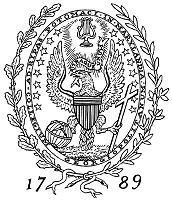Jesuit Community Cemetery (Georgetown University)
 Cemetery in 2010 | |
| Details | |
|---|---|
| Established | 1808 (1854 in present location) |
| Location | Georgetown University, Washington, D.C. |
| Coordinates | 38°54′29″N 77°04′25″W / 38.90806°N 77.07361°WCoordinates: 38°54′29″N 77°04′25″W / 38.90806°N 77.07361°W |
| Type | Roman Catholic |
| Size | 1 acre (0.40 hectares) |
| No. of graves | 350 |
| Find a Grave | Jesuit Community Cemetery |
The Jesuit Community Cemetery is a cemetery on the campus of Georgetown University in Washington, D.C. that is the final resting place for Jesuits who were affiliated with the university. It was first established in 1808, and was moved to its present location in 1854.
History
The Jesuit cemetery was originally established in 1808 at what is now the southern end of Healy Hall. The first person buried there was Thomas Kelly, S.J. on August 16, 1808.[1] With the construction of Maguire Hall, the cemetery was moved to its present location in 1854, as university administrators did not want the cemetery immediately next to the building.[2] In the course of this, the remains of forty-six Jesuits were exhumed and relocated.[1]
In a 1964 letter to university president Edward Bunn, one senior administrator proposed the idea of exhuming the bodies in the cemetery and removing them to the cemetery at Woodstock College in Maryland, as doing so would free up approximately one acre of land on the campus that could be used for building.[3]
Today, the cemetery is situated between the Intercultural Center and Harbin Hall, in the middle of Georgetown's campus.[4] As of 2009, the cemetery is the resting place for 350 Jesuits, of which 17 served as president of Georgetown University. It is the oldest of the extant cemeteries owned by the university.[3] As with other Jesuit cemeteries around the world, all of the headstones are uniform.[5] Many of these headstones are marked in Latin with coadjutor (to indicate the decadent was a Jesuit brother), sacerdos (to indicate the decadent was a priest), or scholastic.[6]
Notable interments
Among the notable burials are:
See also
References
- 1 2 "Is it true that the Jesuit Community cemetery was originally in a different location on campus?". Georgetown University Library. Archived from the original on June 12, 2013. Retrieved September 24, 2018.
- ↑ "Jesuit Community Cemetery at Georgetown University". Georgetown University Library. Archived from the original on April 25, 2018. Retrieved September 24, 2018.
- 1 2 Brint, Juliana (October 29, 2009). "Six Feet Under GU". The Georgetown Voice. Archived from the original on March 4, 2016. Retrieved September 24, 2018.
- ↑ Hussey, Sandy (May 22, 2018). "Q. Why are there graves on campus?". Georgetown University Library. Archived from the original on September 25, 2018. Retrieved September 24, 2018.
- 1 2 3 Schenden, Gregory (November 9, 2017). "SCHENDEN: Leaving a Transcendent Legacy". The Hoya. Archived from the original on January 12, 2018. Retrieved September 24, 2018.
- ↑ O'Neill, Paul R.; Williams, Paul K. (2003). Georgetown University. Charleston, South Carolina: Arcadia Publishing. p. 25. ISBN 0738515094.
- ↑ "Father Edward B. Bunn". Billion Graves. Archived from the original on September 26, 2018. Retrieved September 26, 2018.
- 1 2 Carnes, Matthew (February 7, 2013). "CARNES: Humility and Humor from Generations Past". The Hoya. Archived from the original on September 7, 2015. Retrieved September 24, 2018.
- ↑ "Records of the American Catholic Historical Society of Philadelphia". Records of the American Catholic Historical Society of Philadelphia. American Catholic Historical Society of Philadelphia. 17: 291. 1906. OCLC 32337155 – via Google Books.
- ↑ Keeler, Virginia (February 1, 2006). "Highly Decorated: The Work of Brother Francis C. Schroen, S.J." library.georgetown.edu. Georgetown University Library. Archived from the original on June 27, 2018. Retrieved August 13, 2015.
![]()
